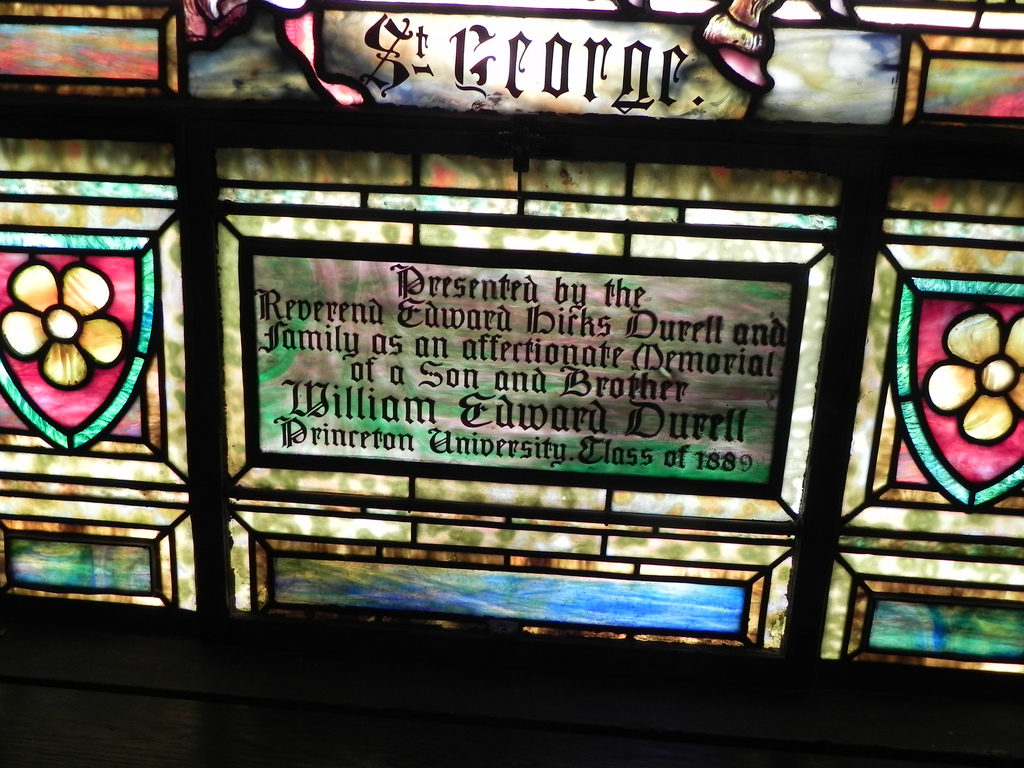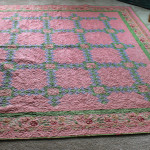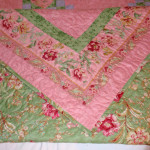 Awestruck by the Tiffany window of St. George and the Dragon in the balcony of Princeton United Methodist Church, visitors want to know more about its history. It is dedicated to Eddie Durrell.
Awestruck by the Tiffany window of St. George and the Dragon in the balcony of Princeton United Methodist Church, visitors want to know more about its history. It is dedicated to Eddie Durrell.
William Edward “Eddie” Durrell grew up in southern New Jersey. Well liked, and a talented baseball player, his father, Rev. Edward Hicks Durrell, was a Methodist minister. When Eddie came to Princeton University in 1884, he made Princeton Methodist Episcopal Church his church home. Princeton was (and is) a Presbyterian town, but the Methodists had gained a foothold when a “shell buyer” purchased the property for the first sanctuary, on Nassau Street. It was built in 1849. During Eddie’s time, the minister was Charles H. McAnney, “an evangelistic preacher of great power,” according to Ruth Woodward in A Journey of Faith for One Hundred Fifty Years: A History of Princeton United Methodist Church.
Eddie majored in electrical engineering, graduated with honors in 1889, did graduate work in 1890 and ’91, and starred on the baseball team all six years. In 1991 he went to study engineering in Berlin. On a trip to Italy, in 1892, he died of “congestion of the brain” and was buried in Rome.
Meanwhile the Methodists were evangelizing and growing. Moses Taylor Pyne (1855-1921, Princeton University Class of 1877), was the grandson of a Wall Street financier. Pyne bought and expanded Drumthwacket, which is now the New Jersey governor’s official home, and he was very generous to his alma mater. Although he was not a Methodist, he evidently thought that a bigger and grander Methodist church on a main street (he envisioned the High Street of an English village) would be an asset to the town. He bought the property on the corner of Vandeventer — adjoining the sanctuary property, owned by a trustee — and donated it to the church.
In 1910 the church razed its original structure and constructed the present church on the double lot. Many stepped forward to help erect a grander building than before, worthy of a university town. Among the contributors was the family of Eddie Durrell. Ministers aren’t generally rich, but Rev. Durrell had been investing in cranberry bogs and had become one of the largest cranberry growers in the state.
Why St. George? We can think of George’s story as an allegory of the triumph of good over evil. George is pictured — not in the act of spearing the dragon — but with his sword sheathed, as if the battle had been won.



